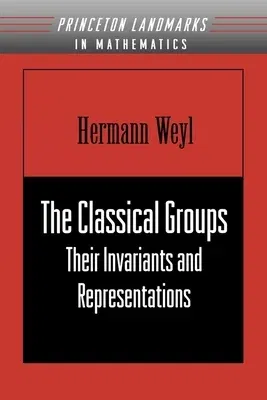In this renowned volume, Hermann Weyl discusses the symmetric, full
linear, orthogonal, and symplectic groups and determines their different
invariants and representations. Using basic concepts from algebra, he
examines the various properties of the groups. Analysis and topology are
used wherever appropriate. The book also covers topics such as matrix
algebras, semigroups, commutators, and spinors, which are of great
importance in understanding the group-theoretic structure of quantum
mechanics.
Hermann Weyl was among the greatest mathematicians of the twentieth
century. He made fundamental contributions to most branches of
mathematics, but he is best remembered as one of the major developers of
group theory, a powerful formal method for analyzing abstract and
physical systems in which symmetry is present. In The Classical
Groups, his most important book, Weyl provided a detailed introduction
to the development of group theory, and he did it in a way that
motivated and entertained his readers. Departing from most theoretical
mathematics books of the time, he introduced historical events and
people as well as theorems and proofs. One learned not only about the
theory of invariants but also when and where they were originated, and
by whom. He once said of his writing, "My work always tried to unite the
truth with the beautiful, but when I had to choose one or the other, I
usually chose the beautiful."
Weyl believed in the overall unity of mathematics and that it should be
integrated into other fields. He had serious interest in modern physics,
especially quantum mechanics, a field to which The Classical Groups
has proved important, as it has to quantum chemistry and other fields.
Among the five books Weyl published with Princeton, Algebraic Theory of
Numbers inaugurated the Annals of Mathematics Studies book series, a
crucial and enduring foundation of Princeton's mathematics list and the
most distinguished book series in mathematics.

